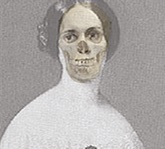To borrow from Jacques Rancière (1992), who fully recognized the flaws and limitations of such an endeavor, we as a university should aspire to make a "community engaged in the ongoing creation of equality" (p. 84).

It is time we recognize Clemson's other founders: the slaves of Calhoun and Clemson, the Cherokee we drove off this land, those we rejected—individuals such as Angelina Grimké and Simon Coker, just two examples of the virtue we might realize if we possessed the courage—worthy individuals for whom we should be naming our campus buildings. Acknowledgments such as this work to build a public memory that will drive us to better design for equality in South Carolina.
And it is time we start listening to the many voices on Clemson University's campus who might best know how we can work towards this equality. We simply need to find the bravery and wisdom to let our old notions of ghosts rest, and listen instead to those who might better guide us towards realizing
that "High Seminary of Learning."